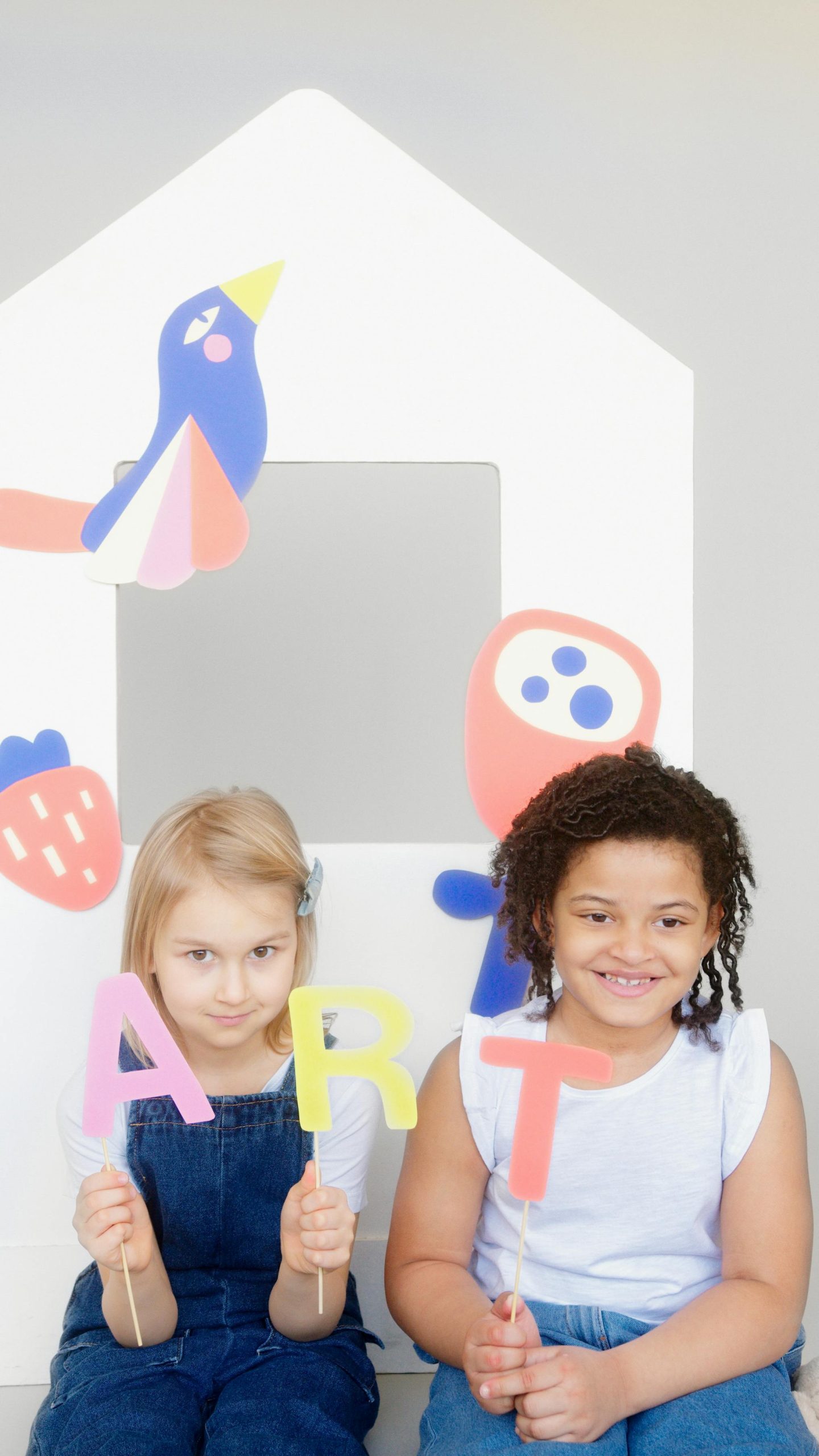Introduction to Fostering a Love of Learning

Instilling a passion of learning in children is a cornerstone for lasting success. It’s about cultivating curiosity and an unquenchable desire to investigate the world. The benefits of this strategy spread far and broad, establishing a foundation for continual growth, flexibility, and resilience. In this post, we’ll look into a range of tactics aimed to ignite and sustain this desire for learning. From building a climate that celebrates questioning to embedding learning into everyday activities, these techniques are both practical and powerful. They offer not just to enrich your child’s scholastic experience but also to transform the way they view the world around them. Let’s go on this wonderful voyage together, nurturing a passion of learning that will last a lifetime.
Creating a Stimulating Learning Environment at Home

Designing Spaces That Encourage Exploration and Learning
- Creating an environment that stimulates curiosity begins with intelligent design. A dedicated place, rich in resources and free from interruptions, enables children to explore. It’s not about the size of the area but how it’s exploited.
- Shelves within reach, marked bins, and locations for quiet reading or creative endeavors can dramatically increase their learning experience. This setup not only makes learning accessible but also fun.
The Role of Educational Toys and Resources in Stimulating Intellectual Curiosity
- Educational toys and resources are important in kindling intellectual curiosity. They provide hands-on experiences that are both fascinating and enlightening.
- From puzzles that challenge problem-solving abilities to construction sets that stimulate creativity, these items promote a wide range of developmental milestones.
- Moreover, books customized to their hobbies enhance their knowledge and imagination, making learning an adventure.
Incorporating Technology Wisely to Enhance Learning
- Technology, when used appropriately, can be a great ally in education. Interactive apps and instructional software offer tailored learning experiences that adapt to your child’s speed.
- However, it’s vital to find a balance. Screen time should be controlled and augmented with real-world experiences.
- Encouraging youngsters to use what they’ve learned online in practical tasks strengthens their knowledge and keeps them engaged.
By carefully creating learning spaces, selecting engaging resources, and integrating technology strategically, you can create a home setting that not only supports your child’s educational journey but also instills a lifetime love of learning. This method, rich in variety and adapted to their developing interests, ensures that learning is always perceived as a thrilling experience, full of potential.
Leading by Example: The Power of Modeling

Demonstrating a Love for Learning in Your Own Life
- Embodying a passion for learning is the first step in inspiring your youngster. When kids see you engaged in reading, developing new interests, or pursuing higher knowledge, it sends a significant message.
- This graphic lesson tells children that learning isn’t tied to the classroom—it’s a lifelong adventure. Your excitement for acquiring new knowledge will automatically stimulate their attention.
Sharing Your Learning Experiences and Discoveries
- Take the opportunity to share what you’ve learnt with your youngster. Whether it’s a fascinating information from a book or a talent you’ve recently gained, discussing these experiences may be immensely exciting.
- It helps kids to perceive learning as a shared adventure, full of surprises and joys. This discourse also offers up possibilities for them to communicate their interests and findings, generating a vibrant, two-way exchange of knowledge.
Encouraging Questions and Showing How to Find Answers Together
- Curiosity is at the center of learning. When your youngster comes to you with questions, accept them.
- Show children how to search for answers, whether it’s through books, internet resources, or real trials. This not only teaches kids how to learn but also that the pursuit for information is a collaborative and joyful process.
- For instance, exploring the Australian Academy of Science’s Curious website together might be a fun approach to address their science-related inquiries.
By leading by example, sharing your learning path, and promoting inquiry, you set the framework for a lifelong love of learning. This technique, integrated seamlessly into the fabric of everyday life, ensures that learning is not perceived as a chore but as a joyful trip of discovery. Together, you and your kid can explore the boundless possibilities that knowledge brings, building a deep and enduring passion for learning.
Integrating Learning into Daily Activities

Turning Everyday Moments into Learning Opportunities
Every day is a treasure mine of possible learning moments. By weaving educational experiences into ordinary activities, we may show youngsters that learning isn’t confined to classrooms or textbooks. It’s a vibrant, continual process that happens everywhere. This method not only makes learning highly entertaining, but also relatable.
Encouragement of Observation, Experimentation, and Inquiry in Everyday Life
Encourage your youngster to investigate, ask questions, and notice the world around them. These are the questions that plant scientists ask when they wonder why the sky is blue or how plants develop. We can develop critical thinkers who aren’t scared to ask questions by encouraging a mentality that values observation and inquiry.
Uses of Cooking, Shopping, and Outdoor Activities to Teach Practical Skills
Cooking together may teach you about nutrition, chemistry, and measurements. Shopping excursions present chances to practice math, budgeting, and understanding the worth of money. Engaging in outdoor pursuits like as gardening and hiking can facilitate conversations on biology, geography, and environmental science. With so many learning opportunities, these activities all assist kids in comprehending how knowledge is used in real-world situations.
We show that education is more than simply formal instruction; it’s a dynamic, essential aspect of life, and we do this by incorporating learning into everyday activities. This method fosters a passion of learning in your child that will follow them on their path of exploration and development, in addition to improving their comprehension of the world.
Encouraging Your Child’s Passions and Interests

Finding and Developing Your Child’s Natural Interests and Talents
- Every youngster has a special combination of interests and abilities that are just waiting to be found. Finding your child’s passions can be accomplished in large part by watching them play, observing what grabs their attention, and listening to them discuss their likes and dislikes. Their confidence and skill set can be greatly increased by supporting these natural tendencies and giving them the tools and chances to explore further.
The Significance of Not Pressuring Yourself to Put Your Child’s Interests First
- It’s important to keep in mind that your child’s interests may vary, even while it can be tempting to push them toward your own pastimes. A sense of autonomy and self-worth is fostered when their distinctiveness is respected. It’s important to encourage them on their path rather than trying to fit them into ours. This strategy makes sure students follow interests that genuinely speak to them, which raises their level of participation and enjoyment in the classroom.
How to Locate Resources and Encounters That Fit Your Kids’ Interests
- It can be an exciting journey in and of itself to find the perfect materials and activities for your child’s interests. Start by going to community centers, libraries, and websites that are devoted to the interests and education of kids. Enrolling kids in clubs or programs centered around their interests can also be quite advantageous. These encounters broaden their knowledge and let them meet individuals who share their interests, which enhances their educational process even more.
You have a significant impact on your child’s development when you actively encourage their passions and interests. This individualized method makes sure that for them, learning turns into a really meaningful and personal trip. Recall that the intention is to kindle in them a lifelong love of learning that will lead them to achieve their goals and dreams.
Overcoming obstacles and disappointments

Teaching the Value of Making Mistakes and Resilience
- One essential component of a passion of learning is resilience. Teaching kids that obstacles are not signs of failure but rather chances for improvement is the goal. They develop a mindset that is unafraid of obstacles when they are encouraged to accept mistakes as a necessary part of learning. By taking this strategy, they gain confidence and can face new and challenging jobs with a positive outlook.
Tips for Encouraging Your Child During Challenging Learning Stages
- Every child has setbacks while pursuing their education. At certain periods, one may become less motivated. Rekindling their excitement can be accomplished by techniques like creating modest, attainable goals and acknowledging their achievements. Furthermore, learning can become more relatable and interesting by infusing their hobbies into tough subjects, which can help reduce the aggravation that frequently accompanies problematic phases.
The Value of Positive Reinforcement and Acknowledgment in Developing Self-Assurance
- Positive reinforcement and praise are effective strategies for boosting a child’s self-esteem. Acknowledging their endeavors instead than solely focusing on their accomplishments instills a sense of worth in their own diligence. This fosters a good relationship with learning and raises their self-esteem. An encouraging statement like “You worked really hard on this” or “I’m proud of you” can have a big impact on how they approach difficult subjects.
Through emphasising resilience, motivation, and confidence, we can help our kids navigate the highs and lows of their academic path. These techniques not only assist students in overcoming obstacles but also foster a lifelong passion of learning in them. Recall that the objective is to provide them with the resources they need to meet obstacles head-on, not to protect them from them. Let’s get our kids ready for a lifetime of learning that is full of joy, tenacity, and curiosity.
To sum up
Creating a passion for learning changes people’s life. It prepares the path for happiness and resiliency during the learning process. We enable our kids to embrace curiosity and discovery by fostering stimulating environments, setting a good example, and incorporating learning into day-to-day activities. These techniques provide the groundwork for lifetime learning, together with encouragement to pursue their passions and support during difficult times. Let’s make a commitment to fan this flame and give our kids the freedom to explore, develop, and prosper in an infinitely fascinating world.
How to Foster a Love of Learning in Your Child FAQs
Encouraging your child to be curious and ask questions can be achieved by being an active listener and showing genuine interest in their inquiries. Responding with enthusiasm and, when you don’t know the answer, looking it up together, models a love for learning and discovery. Asking them open-ended questions about their day, their thoughts, and the world around them can also stimulate their curiosity and critical thinking skills.
Helping your child develop a positive attitude towards learning starts with showing enthusiasm for their interests and achievements. Your positive attitude towards learning and curiosity can be contagious, encouraging them to adopt a similar outlook. Celebrating their efforts rather than just their achievements helps build a resilient and positive approach to learning challenges.
Instilling a growth mindset in your child involves praising their effort, strategies, and persistence rather than just their intelligence or talent. This approach helps them understand that abilities can be developed through dedication and hard work. Encouraging them to embrace challenges, learn from mistakes, and see effort as a path to mastery fosters a love for learning and resilience.
Making learning fun for your child involves incorporating educational content into activities they already enjoy. This approach helps to naturally stimulate their curiosity and eagerness to learn. For example, if your child loves cooking, use it to teach measurements, fractions, and chemistry.
Supporting your child’s learning at home can be done by creating a dedicated space for studying, providing them with the necessary resources, and being actively involved in their educational journey. Engaging in discussions about what they learned at school and connecting it to real-world examples can deepen their understanding and interest. Regularly communicating with their teachers to stay informed about their progress and how you can complement this learning at home is also beneficial.
Dealing with frustration during learning effectively involves acknowledging your child’s feelings, teaching them to recognize signs of frustration, and taking short breaks to reset. This strategy helps them learn emotional regulation and the importance of perseverance. Encouraging them to express what’s causing the frustration and working together to find a solution or alternative approach can also alleviate stress and make learning more enjoyable.
Exposing your child to new experiences and ideas can be done by introducing them to different cultures, languages, and activities outside their usual routine. This exposure broadens their horizons, enhances their understanding of the world, and sparks interest in learning more about people and places. Visiting museums, libraries, cultural events, and traveling, when possible, are great ways to provide these new experiences.
Encouraging reading in young children can be achieved by reading together daily and letting them choose books that interest them. This not only improves their reading skills but also fosters a love for stories and expands their imagination. Creating a cozy reading nook and visiting libraries together can also make reading more appealing.
Play is crucial in learning as it allows children to explore, experiment, and understand the world around them in a natural and enjoyable way. Through play, children develop critical thinking, problem-solving skills, and creativity. It also helps in the development of social and emotional skills, which are essential for lifelong learning.
To help your child with homework without doing it for them, encourage them to read the instructions out loud and think aloud as they work through problems. This method helps them to process information and develop problem-solving skills. Offering guidance and asking leading questions that prompt them to find the answers themselves teaches independence and confidence in their abilities.

Jasmine Duque-Love is a mother of one and a practicing physiotherapist with a Phd in Physiotherapy
